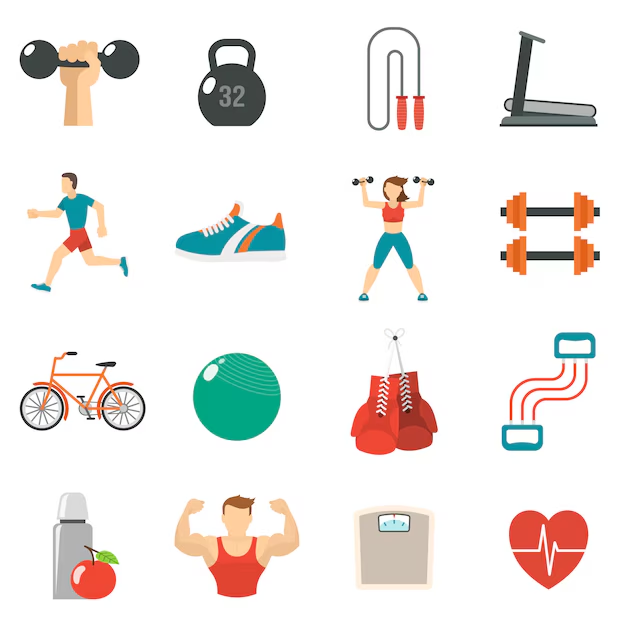Staying Active and Healthy: Exercise for Older Men
Maintaining an active lifestyle is crucial for overall well-being at any age, but it becomes even more vital as we get older. For men, staying active helps preserve strength, flexibility, and balance, contributing to a higher quality of life and reducing the risk of age-related health issues. This article explores various exercises tailored to older men, promoting a holistic approach to fitness and longevity.
The benefits of regular exercise for older men extend far beyond physical fitness. It plays a crucial role in maintaining cognitive function, boosting mood, and improving sleep quality. A well-rounded fitness plan incorporates different types of exercise to address various aspects of health and fitness.
Recommended Exercises for Older Men
Walking: A Foundation for Fitness
Walking is a low-impact, accessible exercise that offers significant health benefits. It improves cardiovascular health, strengthens leg muscles, and maintains joint flexibility. Walking with a friend or pet can also enhance social interaction and enjoyment. Aim for brisk walks of at least 30 minutes most days of the week.
Strength Training: Combatting Muscle Loss
Age-related muscle loss (sarcopenia) is a common concern. Strength training helps counteract this by building and maintaining muscle mass. Start with light weights or resistance bands and gradually increase the intensity as you grow stronger. Focus on major muscle groups: legs, arms, back, and core. Consult a fitness professional for guidance on proper form and exercise selection.
Balance Exercises: Preventing Falls
Maintaining balance is paramount for preventing falls, a significant risk for older adults. Simple exercises like single-leg stances, heel-to-toe walking, and using a balance board improve stability and coordination. Regular practice enhances balance and reduces the risk of falls and injuries.
Yoga and Pilates: Flexibility and Mind-Body Connection
Yoga and Pilates are excellent for improving flexibility, strength, and balance. These mind-body practices also promote relaxation and stress reduction, contributing to overall well-being. Consider joining a class or following online tutorials to learn proper techniques.
Swimming: Gentle yet Effective
Swimming is a low-impact exercise ideal for individuals with joint pain or arthritis. The water's buoyancy reduces stress on joints while providing a full-body workout. Swimming improves cardiovascular health, muscle strength, and flexibility.
Tai Chi: Gentle Movement for Balance and Focus
Tai Chi's slow, flowing movements improve balance, flexibility, and mental focus. Its meditative aspects reduce stress and anxiety. Joining a class provides structured learning and social interaction.
Cycling: Cardiovascular Fitness with Low Impact
Cycling, whether on a stationary bike or outdoors, is a low-impact exercise that improves cardiovascular health and leg strength. Enjoy the fresh air and scenery while boosting your fitness level.
Stretching: Maintaining Flexibility and Preventing Injuries
Regular stretching maintains flexibility and prevents muscle tightness, improving range of motion and reducing the risk of injury. Focus on major muscle groups, warming up beforehand to avoid straining muscles.
Chair Exercises: Adapting to Limited Mobility
Chair exercises offer a convenient and safe option for individuals with limited mobility. These exercises target various muscle groups using a chair for support.
Group Fitness Classes: Motivation and Socialization
Group fitness classes provide motivation, social interaction, and expert guidance. Classes designed for seniors offer a safe and supportive environment for exercise.
Golf: A Combination of Physical and Mental Activity
Golf offers a combination of physical activity and mental engagement. Walking the course provides cardiovascular benefits, while the swing engages multiple muscle groups. It also offers opportunities for social interaction and enjoyment of the outdoors.
Gardening: Physical Activity in Nature
Gardening is a surprisingly effective way to stay active. The various physical tasks involved—digging, planting, weeding—engage different muscle groups and improve balance. The therapeutic benefits of spending time in nature add to the overall well-being.
Dancing: Fun and Fitness Combined
Dancing is a fun and effective way to improve cardiovascular health, coordination, and balance. Various dance styles offer options to suit different preferences and fitness levels.
Mindfulness and Meditation: Mental Well-being
Mental well-being is just as important as physical health. Mindfulness and meditation practices reduce stress, improve focus, and promote relaxation.
Consistency and Personalized Approach
Consistency is crucial for reaping the benefits of exercise. Choose activities you enjoy and integrate them into your regular routine. Listen to your body, adjust intensity as needed, and consult your healthcare provider before starting any new exercise program, particularly if you have pre-existing health conditions. Remember, aging gracefully involves embracing an active lifestyle.
What are your favorite ways to stay active? Share your thoughts and experiences in the comments below.
```


